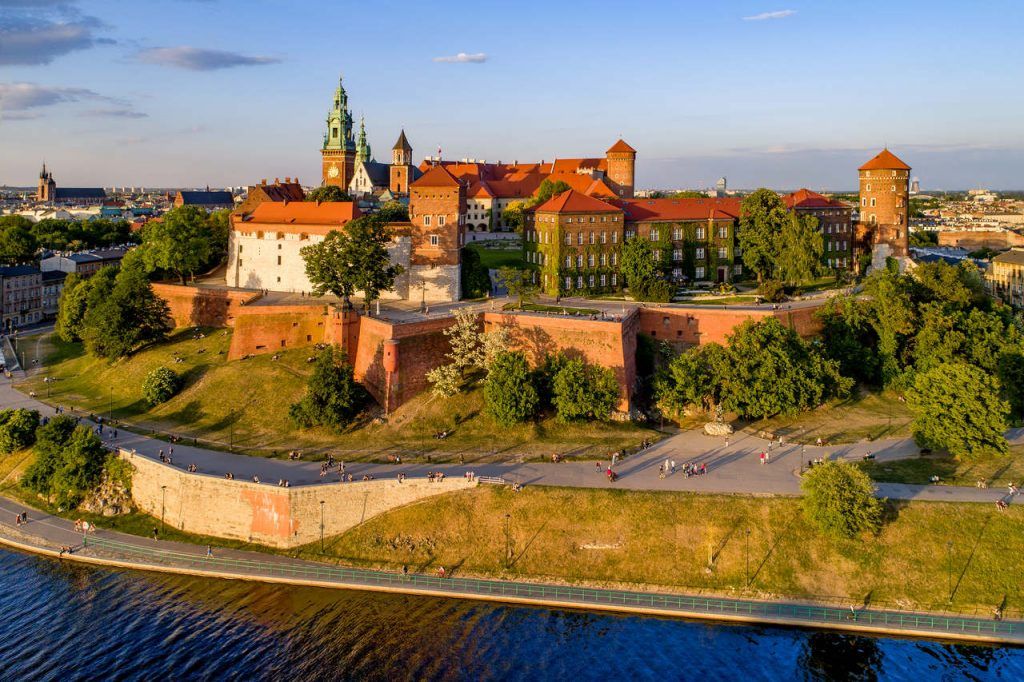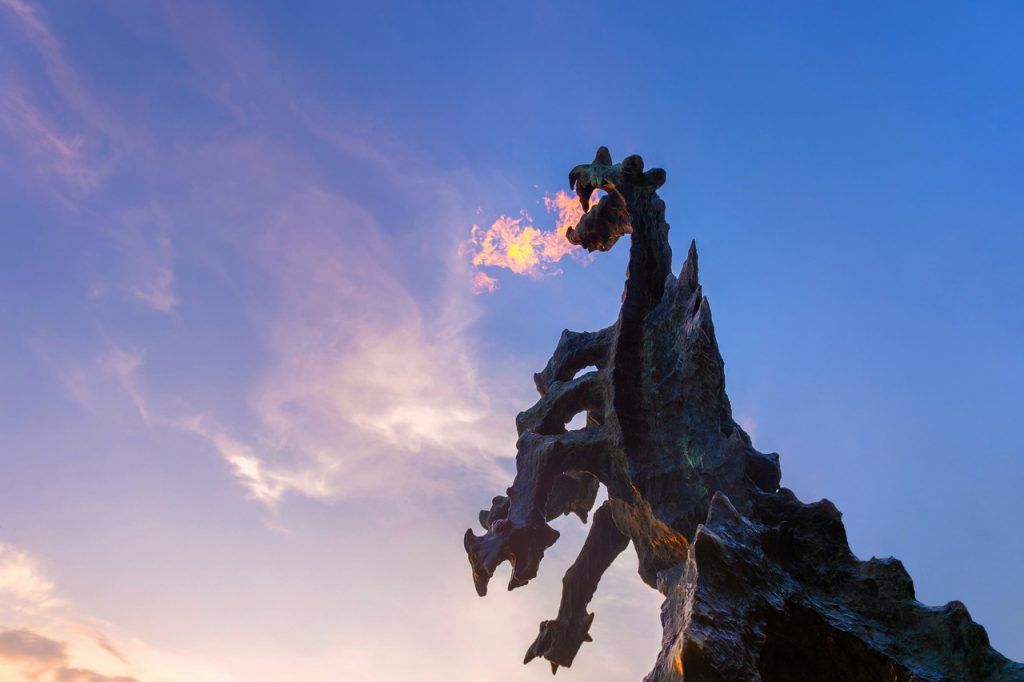The legend of the Wawel dragon
The story that every Polish child knows
Once you get to Krakow, don’t be surprised when you see plush dragons and other gadgets representing a dragon. You could say that it is one of Krakow’s most recognizable symbols. So what’s the deal? It is all about a famous folk tale that originated a long time ago. The legend of the Wawel dragon is very popular in Poland, so every child, regardless if they are from Kraków or not, gets to hear it at an early age. A few versions of this tale, but one of them, involving a smart shoemaker, is especially popular. Read on as we are happy to share it!
Why is the Polish dragon called “Smok Wawelski”?
Now that you know there was a dragon in Poland let us explain one important thing. So, do you actually know why this monstrous beast is called “Wawel dragon”? The answer is pretty simple. Wawel is the name of a hill located next to the Vistula River (in Kraków). On the top of the hill stands the Wawel Castle, one of the most popular attractions in Krakow that you are sure to notice during your trip. This is where the Polish kings used to live and where many of them were buried. Our famous dragon lived at the foot of Wawel Hill. That is why it is known as the Wawel dragon (“Smok Wawelski” in Polish). Now that you know this tidbit let’s find out how the legend goes! Or at least, the most popular version.

A long time ago…
…when King Krakus lived on Wawel Hill, a frightening dragon appeared in the city of Kraków. All its inhabitants were terrified but didn’t know how to defeat him. The monster was getting more and more comfortable on Wawel Hill, and the people had to offer him cattle to quench his hunger.
Desperate King Krakus decided to announce a competition. The man who kills the dragon will have the honor of marrying his daughter, princess Wanda, and will receive his royal crown. Although many daredevils were ready to prove themselves to the king, even the bravest and the best knights ended up dead when trying to defeat the beast. Hopelessness started to spread among the terrified people of Krakow. They were wondering if the dragon will ever disappear from their city. Finally, one day a poor but sharp shoemaker named Skuba came up with a brilliant idea. He used the dragon’s appetite against him. Skuba stuffed a sheepskin with sulfur and set it in front of the dragon’s den as bait. Of course, the dragon could not deny himself the tasty treat and quickly ate the sheep. It made his throat hurt, and he felt such an incredible thirst that he started drinking from the river. The beast drank, and drank, and drank until…it exploded.
Although initially, no one believed that the poor shoemaker could defeat the monster, he became a hero. With the dragon no longer, King Krakus was relieved and his town safe again. The king, true to his word, gave Skuba his daughter’s hand. And they lived happily ever after.
Where does this legend come from?
The first written record of the dragon’s story comes from the 13th century and differs from the most popular version above. Its author was Wincent Kadłubek, and it went more or less like this:
King Grakcha tasked his two sons to kill the dragon. This endeavor was supposed to prove their bravery and that they were worthy of the throne. After a few failed attempts at slaying the dragon, they dropped him cattle stuffed with sulfur and succeeded in defeating him. Sadly, the king’s younger son, wanting to get rid of the competition for the throne, killed his brother and made the king believe that the other died when fighting with the dragon. When the truth came out sometime later, he was exiled from the kingdom, and the king’s daughter Wanda inherited the throne.
This first written record became a foundation for many varying versions of the tale. The heroes who defeated the dragon often change depending on which version of the tale you hear, while some of them suggested that the dragon’s diet also consisted of young ladies. However, the idea of the dragon being defeated with the help of sheepskin and sulfur is rather consistent.

Visit the dragon of Wawel Hill on your next trip to Krakow
Now that you know the story of the Wawel dragon, it’s time to visit the castle and the dragon’s den. Yes, you read correctly! Once you’re on Wawel Hill, you can go inside the dragon’s cave (“Smocza Jama” in Polish). We recommend this stop, especially if you’re traveling with kids. Don’t forget to snap a photo with the 6-meter tall Wawel Dragon Statue standing in front of the cave next to the Vistula river. Just watch out for the fire that’s coming out of his mouth!
The dragon’s bones
Okay, we admit that they are not actual dragon bones, but we like the idea. In fact, the bones are said to be remains of huge animals like a mammoth or whale. Please don’t ask us how they got there. We’d like to know as well!
If you go to the Wawel Cathedral, you will see some of those bones hanging from one of its entrances. Some believe that medieval people brought them there, thinking they were the remains of the dragon. Others think it had more to do with protection from evil spirits. There are more legends related to these bones, and they are not very optimistic. According to one of them, the world will end when the bones fall from the chains. You can imagine how carefully those chains and bones are looked after!

A walk around Krakow
If you want to see more of Kraków, then we recommend our Krakow City Walk. Apart from Wawel Hill, you’ll stop by other must-see attractions in the city and hear the best stories from a local guide. Let the adventure begin.










